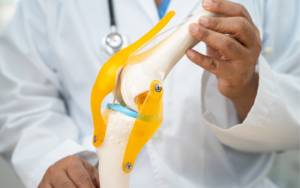
Road accidents take thousands of people’s lives each year globally because of non-compressible hemorrhage (NCH), which is one of the main preventable causes of death. It is critical to control bleeding immediately after the accident. Still, if antifibrinolytic medication tranexamic acid (TXA) is administered less than the first three hours of injury, the study has shown that it decreases the mortality rate. Although TXA has traditionally been administered intravenously, new research indicates that it can also be administered intramuscularly (IM), which may enable bystanders to act before emergency medical services (EMS) can arrive.
However, is it safe for a layperson to know where to inject? According to a recent randomized controlled trial at the University of Exeter, the answer was definitely affirmative, particularly with the aid of verbal instructions accompanied by photographic guidance.
In a simulated road injury scenario, 64 lay participants were recruited for the study without any prior clinical training and asked to locate the deltoid muscle site for an intramuscular injection. Two groups of participants were randomly assigned: one group received only verbal instructions, while the other group received both verbal instructions and a photographic aid.
Three experienced medical professionals evaluated standardized photos of the injection site marking stickers that participants applied to determine accuracy. The outcomes were remarkable. The participants who received photographic support had a significantly higher chance of selecting a safe injection site (87.5% vs. 62.5%) than those with only verbal instructions. Statistical analysis shows that visual support increased the participants’ chances of success by almost five times (OR 4.67, 95% CI 1.33–19.92, p=0.03).
Injection safety concerns were also significantly lower in the photo-assisted group (18.8%) than in the verbal-only group (53.1%). Accuracy was unaffected by self-reported confidence, age, gender, or previous first aid training, indicating that the benefit was directly related to the visual aid.
Finally, the performance of photographic aids is improved and supported by consistent and robust differences between groups, despite the low overall inter-rater reliability among clinical reviewers.
With the delay of TXA administration for every 15 minutes, the survival benefit decreased roughly by 10%. Because EMS response times can be lengthy in rural or resource-constrained areas, bystander intervention is essential. In the crucial minutes following an accident, lives could be saved if non-medical personnel were allowed to safely administer IM TXA.
Similar to layperson-administered CPR or the use of defibrillators, this study supports broader evidence that bystanders can effectively perform emergency interventions when provided with structured support. A low-cost and scalable way to empower the public might be to incorporate photographic guidance into emergency dispatch systems, such as through text-based image delivery or mobile applications.
The majority of participants in the trial were young and well-educated, as it was conducted in a controlled and simulated environment. Stress, time constraints, and various situations that arise in real-world emergencies can impact performance. Furthermore, TXA is not yet accessible in auto-injector form, which presents practical issues regarding layperson administration, storage, and accessibility.
Future research should examine how bystanders behave in practical situations and whether photographic guidance is still useful in high-stress situations. The viability of standalone written or visual instructions in locations with poor telecommunications access could also be evaluated by further research.
The study provides strong evidence that basic visual aids can significantly enhance the accuracy of life-saving interventions performed by laypeople, despite their limitations. TXA may eventually be included in community-based trauma response systems, much like the COVID-19 vaccination rollout and naloxone distribution programs have demonstrated that non-clinicians can safely administer intramuscular injections with little training.
IM TXA with visual guidance is an essential component of the road injury chain of survival, when combined with bleeding control kits and public access defibrillators. This study demonstrates a creative and useful step towards enabling the public to save lives at the roadside, as preventable bleeding claims thousands of lives every year.
References: Nutbeam T, Foote E, Rodgers LR, et al. A randomized controlled trial of verbal guidance versus verbal guidance supplemented by a photographic aid for bystander identification of intramuscular tranexamic acid injection sites in a simulated road injury scenario. BMC Emerg Med. 2025;25:197. doi:10.1186/s12873-025-01323-8














